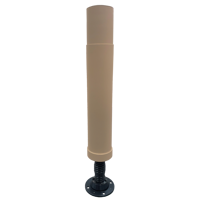Antenna Design/Analysis
PRODUCTS AND SERVICES
The SAS-326-10 is a surveillance/jamming antenna designed to operate withing the 30 MHz to 26 GHz frequency range, which allows for prosecution of a large portion of the RF spectrum. Constructed as a broadband dual band discone/bicone antenna, it is ideal for spectrum operations and spectrum management applications.
Antenna technology is constantly advancing to meet the growing demands of industry. Likewise, Remcom has been keeping pace in order to provide engineers with a suite of tools that match their processes and help them meet their design requirements.
Some of the antenna analysis areas Remcom specializes in include:
- WiFi/Wireless LAN/WiMAX
- Mobile Devices (cellular, Bluetooth, GPS)
- Antenna Arrays
- General Antenna
Antenna engineers favor advanced antenna systems capable of beam steering and multiple data stream transmission in order to meet 5G throughput requirements. Designing such a device is a difficult task because many factors are involved a device’s performance:
- Antenna coupling within a device’s case
- Effects of multipath propagation
- Data transfer schemes
XFdtd and Wireless InSite ensure a comprehensive device design process, from simulating the initial antenna pattern to computing throughput performance in a multipath channel model. Together the products ensure a device will work well in its intended environment.



